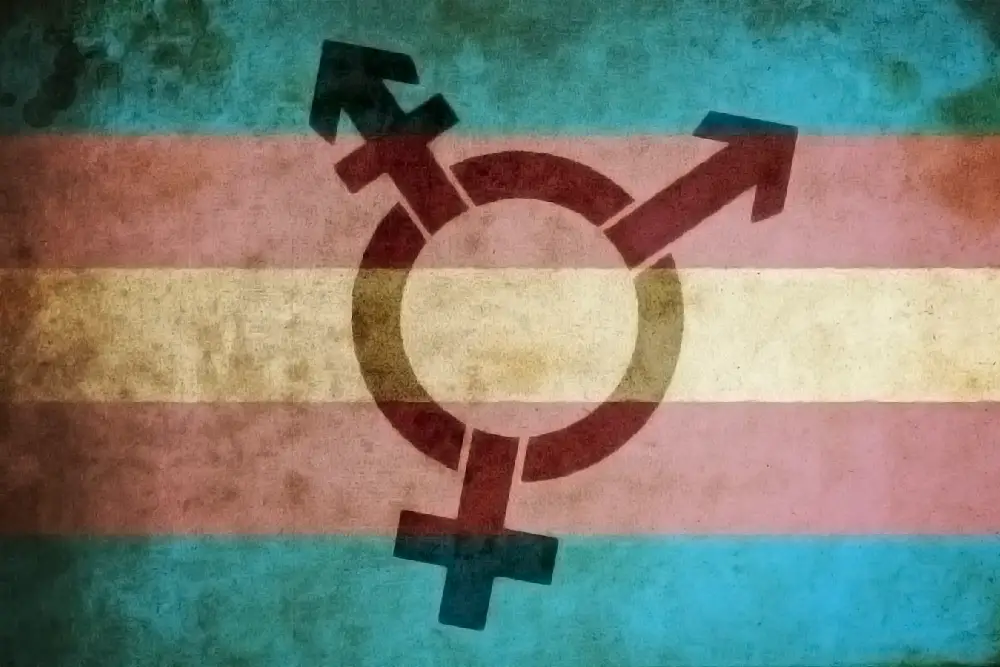Introduction:
Vocal androgyny, a concept often associated with a gender-neutral or blended quality in speech. This type of speech has gained increasing recognition and fascination in contemporary discussions surrounding gender and identity. Unlike the traditional binary understanding of male and female voices, vocal androgyny blurs the lines. These voices offer a rich spectrum of expression that transcends gender norms. This article delves into the various traits that contribute to vocal androgyny. We are examining the complexities and nuances that make this aspect of human communication so intriguing.

Understanding Vocal Androgyny:
Vocal androgyny refers to a vocal quality that doesn’t conform strictly to stereotypical male or female norms. It is not solely dependent on pitch but encompasses a range of characteristics. This is including tone, intonation, rhythm, resonance, articulation, emotional expression, and societal impact.
Individuals with vocally androgynous qualities often possess a unique blend of traits that challenge conventional expectations and provide a platform for diverse self-expression.
Pitch:
While pitch is a fundamental component of vocal androgyny, it’s essential to recognize that androgynous voices don’t necessarily fall in a specific range. Vocally androgynous voices may have a pitch that doesn’t align with traditional expectations for their gender.
The key lies in a balanced pitch that is neither too high nor low, creating a more neutral profile.
Average ranges:
While it’s challenging to pinpoint an exact frequency range for androgynous voices, as individual variation plays a significant role, there are general characteristics that contribute to a more gender-neutral pitch. The average pitch range for androgynous voices typically falls between 165 to 185 Hertz (Hz).
This range allows for a neutral and balanced pitch that neither aligns with the higher end associated with feminine voices (above 200 Hz) nor the lower end associated with masculine voices (below 165 Hz). It’s crucial to note that these are approximate values, and individual voices may vary. Emphasizing the consideration of other elements such as resonance, intonation, and articulation is important in achieving an androgynous vocal quality.
Resonance:
Resonance plays a crucial role in shaping the perceived gender of a voice. A vocally androgynous individual might exhibit a resonance that is neither exclusively chest-based (associated with a deeper, more masculine quality) nor solely head-based (linked to a higher, more feminine quality).
Achieving a balanced resonance can contribute significantly to the androgynous nature of the voice. This allows for a unique blend that defies conventional categorization.
Throat Voice:
The throat voice is typically the most commonly used point of projection that is used in vocal androgyny. However, this can vary heavily from person to person.
- Physiology: The term “throat voice” is less commonly used in formal vocal pedagogy. This is often associated with a more general or mixed resonance. It may involve a balance between chest and head voice. This voice is resonating in the throat area without a specific focus on the lower or upper part of the vocal folds.
- Tonal Quality: Throat voice, if used to describe a balanced resonance, may have a middle-ground tonal quality. Not as deep as chest voice nor as light as head voice. It could be utilized for mid-range pitches and may provide a versatile and well-rounded sound.
Articulation and Pronunciation:
The way words are articulated and pronounced can significantly impact vocal androgyny. Striking a balance between traditionally masculine and feminine articulation patterns can also contribute to a voice that defies easy categorization.
Some androgynous speakers may consciously adopt certain speech patterns, while others naturally embody a mix of linguistic styles. The deliberate choice of pronunciation can serve as a tool for individuals seeking to express their gender identity.
Intonation and Rhythm:
The melodic quality of speech, including intonation and rhythm, can contribute to the androgynous nature of a voice. Avoiding extremes in these elements helps create a more balanced and neutral auditory experience.
A person with vocal androgyny may exhibit a rhythmic pattern and intonation that doesn’t conform strictly to societal expectations based on gender. This deviation from conventional norms adds depth and complexity to the communication style. This can challenge listeners to expand their understanding of gender expression.
Androgynous voices exhibit fluid intonation patterns that add a layer of complexity to the melody line. Rather than adhering strictly to the expected rises and falls associated with gendered speech, vocal androgyny embraces a more versatile and unpredictable intonation. This fluidity in intonation enhances the expressiveness of the melody line. This offering a captivating journey through a diverse range of musical inflections.
Expression and Emotional Range:
Vocal androgyny is not only about the technical aspects of speech but also encompasses the emotional range expressed through the voice. An androgynous voice may convey emotions in a way that transcends gender stereotypes, allowing for a more authentic and versatile expression of feelings. This can lead to a broader understanding of the complexities of human emotion beyond the constraints of traditional gender norms.
The ability to convey a diverse emotional range contributes to a more inclusive and empathetic society. A society dedicated to breaking free from the limitations imposed by a binary understanding of gender.
Whether conveying vulnerability, strength, joy, or sorrow, the androgynous voice serves as a powerful instrument for fostering empathy, understanding, and connection, contributing to a more inclusive and emotionally rich tapestry of human expression.
Societal Impact and Acceptance:
As discussions around gender identity and expression become more prevalent, vocal androgyny plays a crucial role in challenging societal norms and fostering acceptance. Individuals with androgynous voices may face unique challenges as they navigate a world that often expects conformity to traditional gender norms.
However, as awareness grows, there is a gradual shift towards recognizing and celebrating the diversity of voices and expressions, contributing to a more inclusive and tolerant society.
Evolution of Vocal Androgyny in Media and Arts:
The evolution of vocal androgyny in media and the arts represents a transformative journey that has significantly impacted cultural perceptions and expanded the narrative surrounding gender expression.
Over the years, artists, musicians, and actors have challenged traditional norms by deliberately incorporating androgynous vocal qualities into their work. Icons like David Bowie, Prince, and Annie Lennox, among others, have defied gender conventions, using their voices as instruments of liberation. In contemporary times, a growing number of artists intentionally explore vocal androgyny to convey a broader spectrum of identity and challenge societal expectations.
This evolution is not merely about pushing boundaries but also reflects a societal shift towards greater acceptance of gender diversity. Media representation has played a crucial role in normalizing and celebrating androgynous voices, fostering a cultural environment that embraces the richness of human expression beyond the constraints of a binary understanding of gender. As the arts continue to reflect and influence societal attitudes, the evolution of vocal androgyny serves as a catalyst for inclusivity, empowering individuals to embrace their authentic voices and contributing to a more diverse and accepting global narrative.
This visibility not only empowers individuals with androgynous voices but also helps redefine cultural expectations surrounding gender expression.
Conclusion:
Vocal androgyny is a captivating aspect of human communication that challenges preconceived notions about gendered voices. It represents a spectrum of expression, embracing a diverse range of traits that contribute to a more inclusive and nuanced understanding of identity.
As society continues to evolve in its understanding of gender, vocal androgyny serves as a reminder that the human voice is a powerful instrument of self-expression, capable of transcending traditional boundaries and fostering a more inclusive and accepting world. Embracing the traits of vocal androgyny not only enriches our understanding of gender diversity but also paves the way for a more harmonious coexistence of diverse voices in the tapestry of human expression.
The evolution of vocal androgyny in media and the arts further highlights its transformative potential, influencing societal attitudes and contributing to a more inclusive and accepting future.
More About Our Vocal Coaches
We understand that transitioning is often difficult and undeniably stressful for many people. While Dysphoria affects everyone differently, having an affirming voice that feels right for you can be a major factor in managing dysphoria.
Our vocal coaches help you find your voice by:

Dependable
⸺ & ⸺
Diligent
Having an advanced contact and booking platform to be sure that Your Lessons Now is always there for you, and our admin staff will always be here to help.

Helpful
⸺ & ⸺
Human
Providing a human touch to your scheduling and inquiries, our vocal coaches and also our admin team will assist you every step of the way.

Loud
⸺ & ⸺
Proud
Understanding the importance of providing a judgment-free and empathetic and caring environment, since many of us are LGBTQIA+ ourselves.

Secure
⸺ & ⸺
Respected
Our vocal coaches have extensive training, experience, degrees, and awards to further ensure the best learning environment for our students.